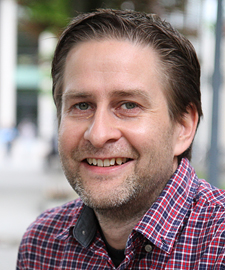
Physics prize both expected, and unexpected
Particle physicists at KTH had nearly given up hope that the discovery of mass within the universe's smallest components, neutrinos, would be recognized with a Nobel Prize.
"But eventually it happened, which is very pleasing. Hopefully it will give a boost to our research area," says Tommy Ohlsson, professor of theoretical physics.
Through large-scale experiments, Nobel physics laureates Takaaki Kajita and Arthur B. McDonald showed that one of the universe's most elusive particles, neutrinos, change shape and thus have mass. The researchers' discoveries cleared up a mystery that physicists had grappled with for decades.
The breakthroughs were made around the turn of the millennium, about the same time that Ohlsson completed his doctorate in the same field. Half of his thesis was about so-called neutrino oscillations.

"As a theorist and phenomenologist, I use the data that is produced by experiments in particle physics. Nobel-awarded work has formed the basis for what is relevant to research further, such as finding theoretical models for how the discovery can be described.
Kajita's and McDonald's findings have necessitated an adjustment to the so-called Standard Model of particle physics, the theory which describes the universe's fundamental elements. The discovery of neutrinos' mass showed that the Standard Model is not complete.
Like many of the world's theoretical particle physicists, Ohlsson and his colleague Mattias Blennow developed several models that can describe Nobel Laureates' findings and thus contribute to a new, improved Standard Model.
The question is which theory best describes neutrinos' mass. Some of them explain the phenomenon by means of completely new, previously-undiscovered particles.
"Here, theorists are one step ahead of experimentalists," Ohlsson says. "Experiments are enormously difficult to implement. So the ability to determine the accuracy of our model — or other researchers' models — lies far in the future."
Tommy Ohlsson has no direct research collaboration with Kajita or McDonald, but he has met them several times at scientific conferences, most recently last year. McDonald has also visited AlbaNova at KTH repeatedly.
As early as 11 years ago, the Nobel Foundation organized a symposium on their discovery, with among others McDonald participating. The purpose of the Nobel Symposia is to explore possible areas for future Nobel Prizes.
"They have been worthy of the prize for a long time, because it is such a great discovery. That the prize came this year was both expected and unexpected. But it is, in any case, very well-deserved," Ohlsson says.
Christer Gummeson
For more information, contact Tommy Ohlsson, tel 08-553781 61 or tommy@theophys.kth.se